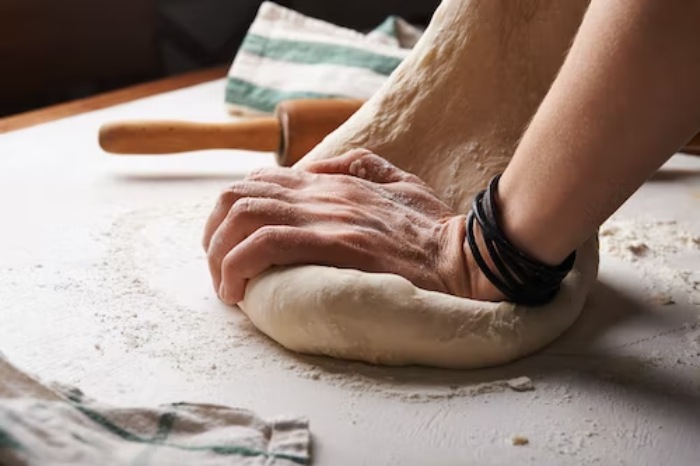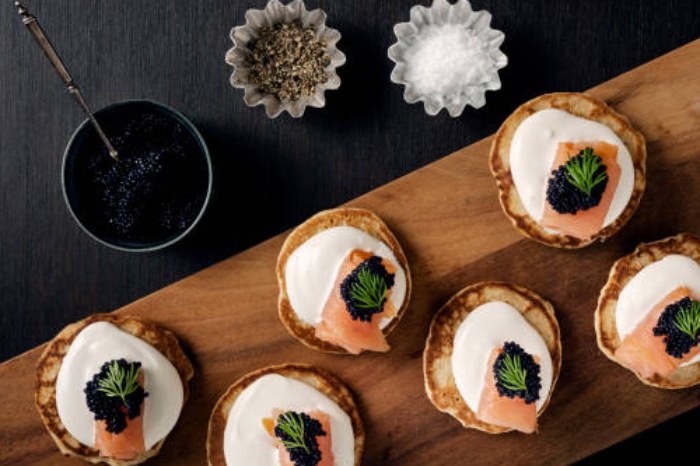Table of Contents
Introduction
 Faina is a classic recipe from Argentina and Uruguay that requires only a few simple ingredients, including chickpea flour, water, salt and olive oil. Chickpea flour is naturally gluten-free and vegan, making it a healthy alternative to other flour. For more information and recipe ideas for preparing this delicious traditional dish, visit https://pequenutricion.com/faina/.
Faina is a classic recipe from Argentina and Uruguay that requires only a few simple ingredients, including chickpea flour, water, salt and olive oil. Chickpea flour is naturally gluten-free and vegan, making it a healthy alternative to other flour. For more information and recipe ideas for preparing this delicious traditional dish, visit https://pequenutricion.com/faina/.
Once the ingredients are mixed, the dough thickens, and the cook pours it into a hot, oiled pan for baking. While baking, the dough develops a crispy exterior while remaining soft and chewy on the inside, resulting in a versatile dish that can be served as a side or main course. People often add tomato sauce or cheese as toppings to enhance the dish’s flavor and texture. For more information and the recipe, visit https://pequenutricion.com/faina/
What is fainá made of?
 Fainá is made from chickpea flour, water, salt and olive oil, as described at https://pequenutricion.com/faina/. Chickpea flour is a naturally versatile ingredient, making it a popular choice for people with dietary restrictions. Chickpea flour is also an honourable source of protein, fibre and several essential nutrients, including iron and zinc, making fainá a nutritious addition to any meal. The dough is mixes into a thick paste and then fill into a hot, oiled pan for baking. When baked, the dough forms a crispy crust on the outside and a soft, chewy texture on the inside. Fainá can be serves as a side dish or as a main course and is often topping with tomato sauce or cheese to enhance the flavour and texture.
Fainá is made from chickpea flour, water, salt and olive oil, as described at https://pequenutricion.com/faina/. Chickpea flour is a naturally versatile ingredient, making it a popular choice for people with dietary restrictions. Chickpea flour is also an honourable source of protein, fibre and several essential nutrients, including iron and zinc, making fainá a nutritious addition to any meal. The dough is mixes into a thick paste and then fill into a hot, oiled pan for baking. When baked, the dough forms a crispy crust on the outside and a soft, chewy texture on the inside. Fainá can be serves as a side dish or as a main course and is often topping with tomato sauce or cheese to enhance the flavour and texture.
Where is fainá originally from?
Fainá is a traditional dish that originated in Genoa, Italy, but has also become a popular food in other countries, especially in South America. Fainá is a staple of Argentine cuisine, often served as a side dish or topping to pizza. To learn more about the nutritional value and benefits of fainá, visit https://pequenutricion.com/faina/.
What is farinata in English?
Farinata is a thin, unleavened pancake or crepe made with chickpea flour, water and olive oil batter. It is a traditional dish has its roots in Liguria, Italy, but is also widely eaten in other parts of Italy and other countries worldwide. Farinata is also known by other names such as Socca, cecina and fainá. In English, it is sometimes called “chickpea pancake” or “chickpea flatbread.”
Is Socca the same as fainá?
 Socca and Fainá share some similarities, but there are also some differences between them. Both dishes consist of a dough made from chickpea flour, water, and olive oil, and they are both cook until they form a thin, crispy cake.
Socca and Fainá share some similarities, but there are also some differences between them. Both dishes consist of a dough made from chickpea flour, water, and olive oil, and they are both cook until they form a thin, crispy cake.
However, Socca originates from Nice, France, while fainá is a staple of Argentine cuisine. Socca tends to be thicker than fainá and is often serves as a street food, snack, or appetizer. Whereas fainá is typically serves as a side dish or as a coating for pizza.
The seasoning and preparation of Socca and fainá can also vary depending on the region and the cook, leading to differences in taste and texture. Although Socca and fainá are similar dishes, their unique characteristics set them apart.
Why do Argentines love fainá so much?
Fainá is a popular food in Argentina, and its popularity is due to several factors. First, fainá is a versatile dish that can be enjoy as a side dish, snack or pizza topping. Its mild flavour also makes it an excellent complement to many other words.
In addition, fainá is a gluten-free food rich in protein, fibre and other essential nutrients, making it a healthy option for people with dietary restrictions or those looking for a nutritious snack. To learn more about the nutritional benefits of Fainá, visit https://pequenutricion.com/faina/.
In addition, fainá is a traditional dish that has been part of Argentine cuisine for many years, and its connection with local culture and history has helped it hold a firm place in the hearts and minds of Argentines. It is often serve in pizzerias and traditional Argentine restaurants, and many people have fond memories of enjoying it with friends and family.
Conclusion
In summary, fainá is a traditional dish that originated in Genoa, Italy. But has also become a popular food in Argentina and other parts of South America. Fainá is a gluten-free, high-protein food made from chickpea flour, water, salt and olive oil. Then baked until it forms a thin, crispy cake.
The popularity of fainá in Argentina is due to its versatility, nutritional value and cultural significance. Whether as a side dish, snack or pizza topping. Fainá is a versatile food. Its high protein and fibre content and its gluten-free. Nature make it a healthy option for people with dietary restrictions or those seeking a nutritious snack.
In addition, fainá is a traditional food that has been part of the Argentine culture for many years and is often associate with memories of family gatherings and special occasions. To learn more about the nutritional benefits of fainá, visit https://pequenutricion.com/faina/. Overall, fainá is a popular food in Argentina and a great example of how traditional cuisine can be both delicious and nutritious.
